College Archives
The FIT College Archives holds records that document the Fashion Institute of Technology's people, events, buildings, and research. The history of FIT is a vital part of the history of New York City's Garment District. The holdings include selected institutional records created by past and current administrative and program units as well as documentation related to FIT campus architecture, information about Museum at FIT exhibitions, and audio-video recordings of FIT-sponsored educational programs including symposia and lectures.
The Gladys Marcus Library is the authorized Office of Record for all FIT historical records including event-related video recordings. As noted in FIT’s Records Retention and Disposition policy, the Head of Library Special Collections and College Archives is responsible for assessing the historical value of FIT’s records, regardless of format and therefore including static and dynamic content. This assures that such records are transferred to the College Archives and permanently preserved.
The entire Records Retention and Disposition Schedule may be found on the New York State Archives’ website . The specific FIT policy on these matters may be found on the Records Retention and Disposition document .
For details as to SPARC’s overall collection development process, please visit our Collection Development Policy page .
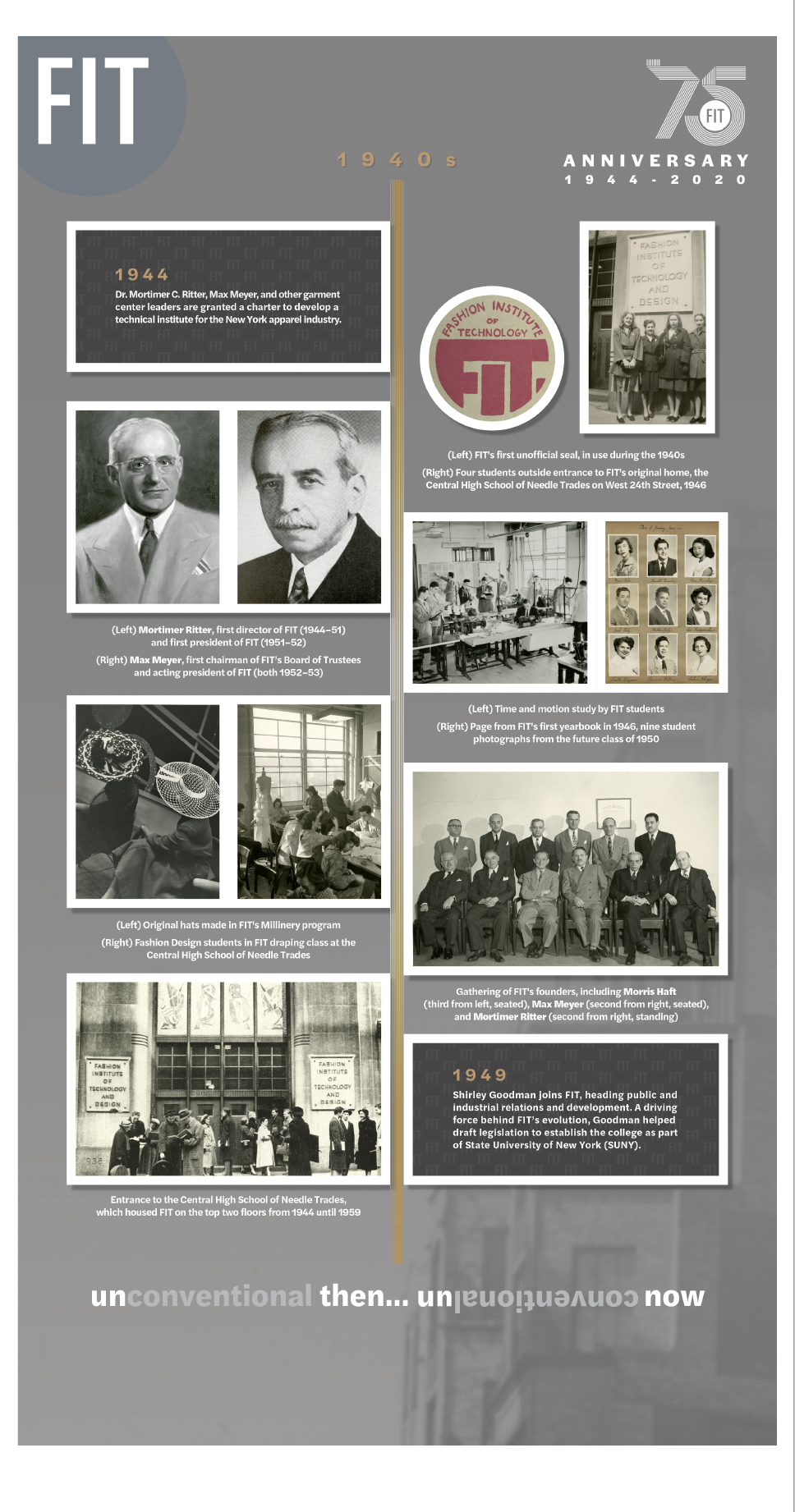 1940s 1940s |
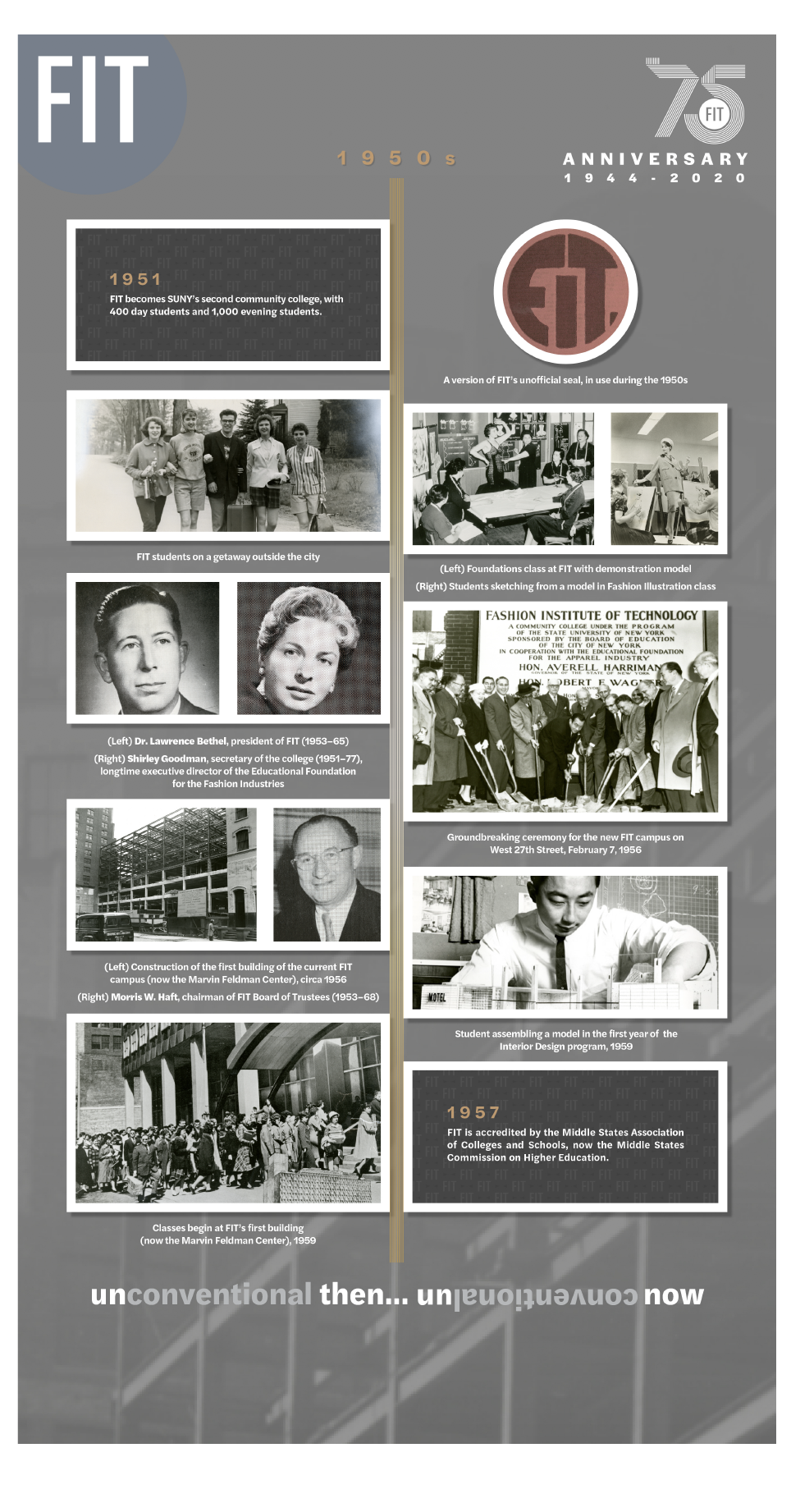 1950s 1950s |
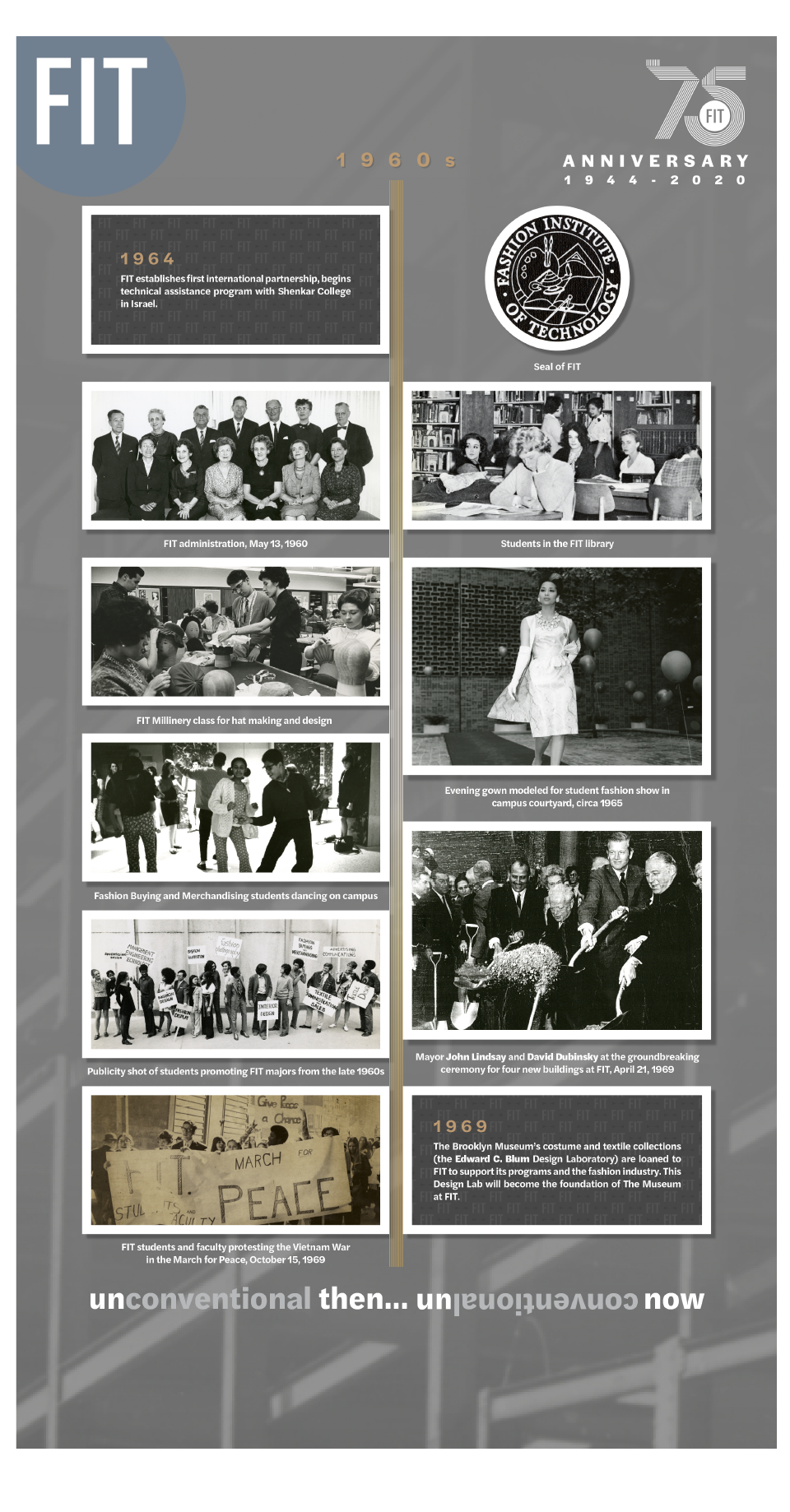 1960s 1960s |
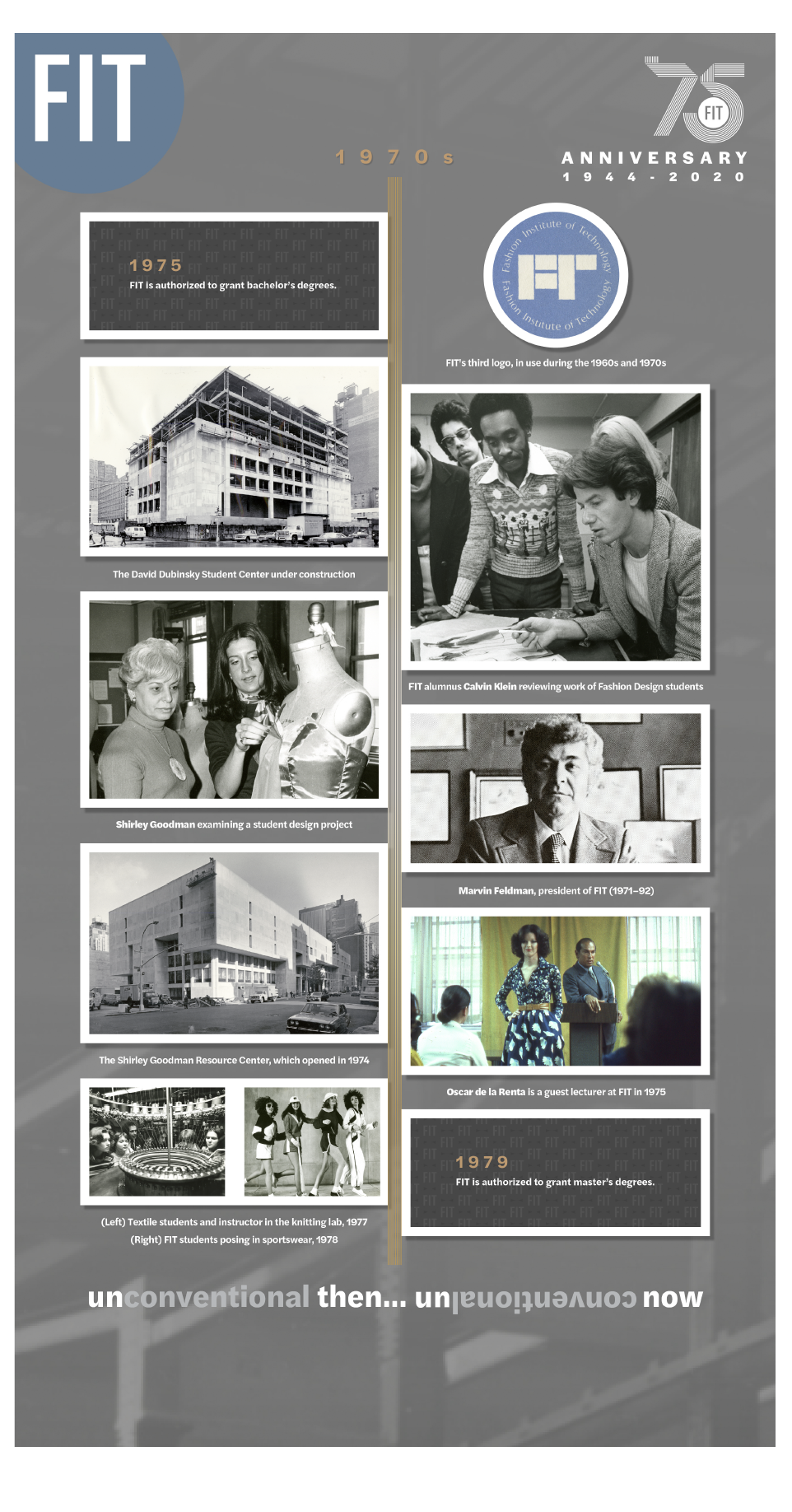 1970s 1970s |
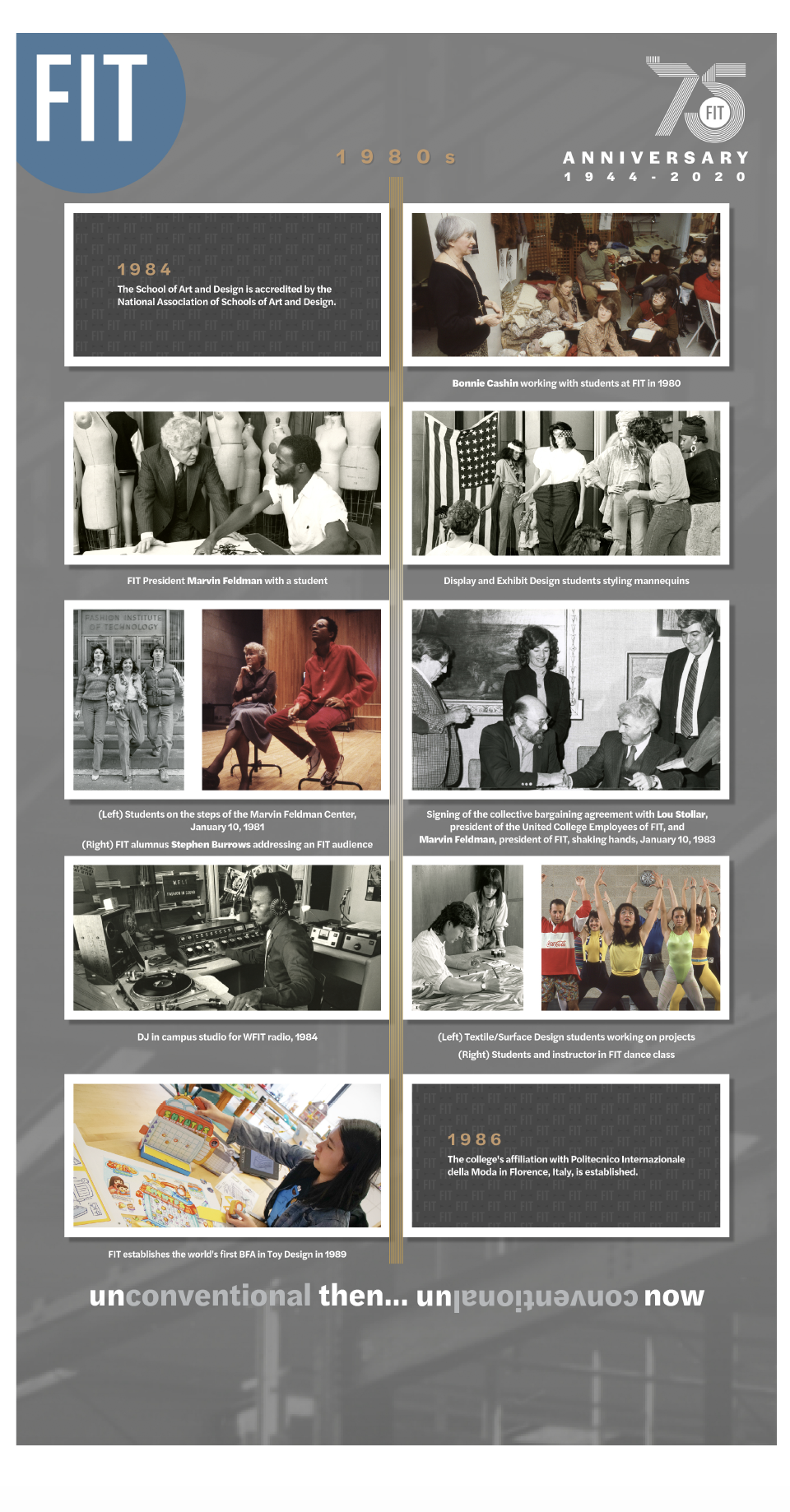 1980s 1980s |
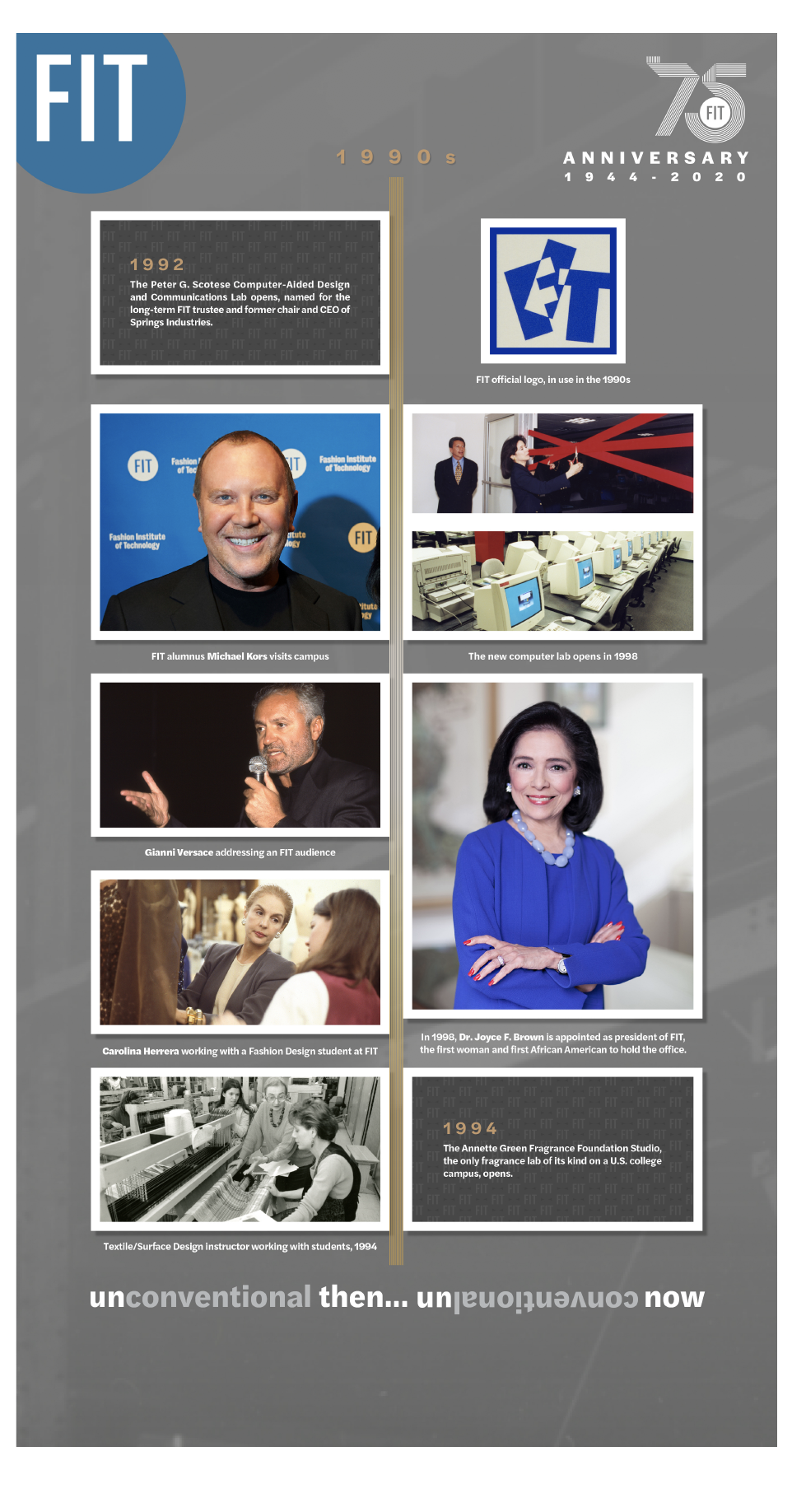 1990s 1990s |
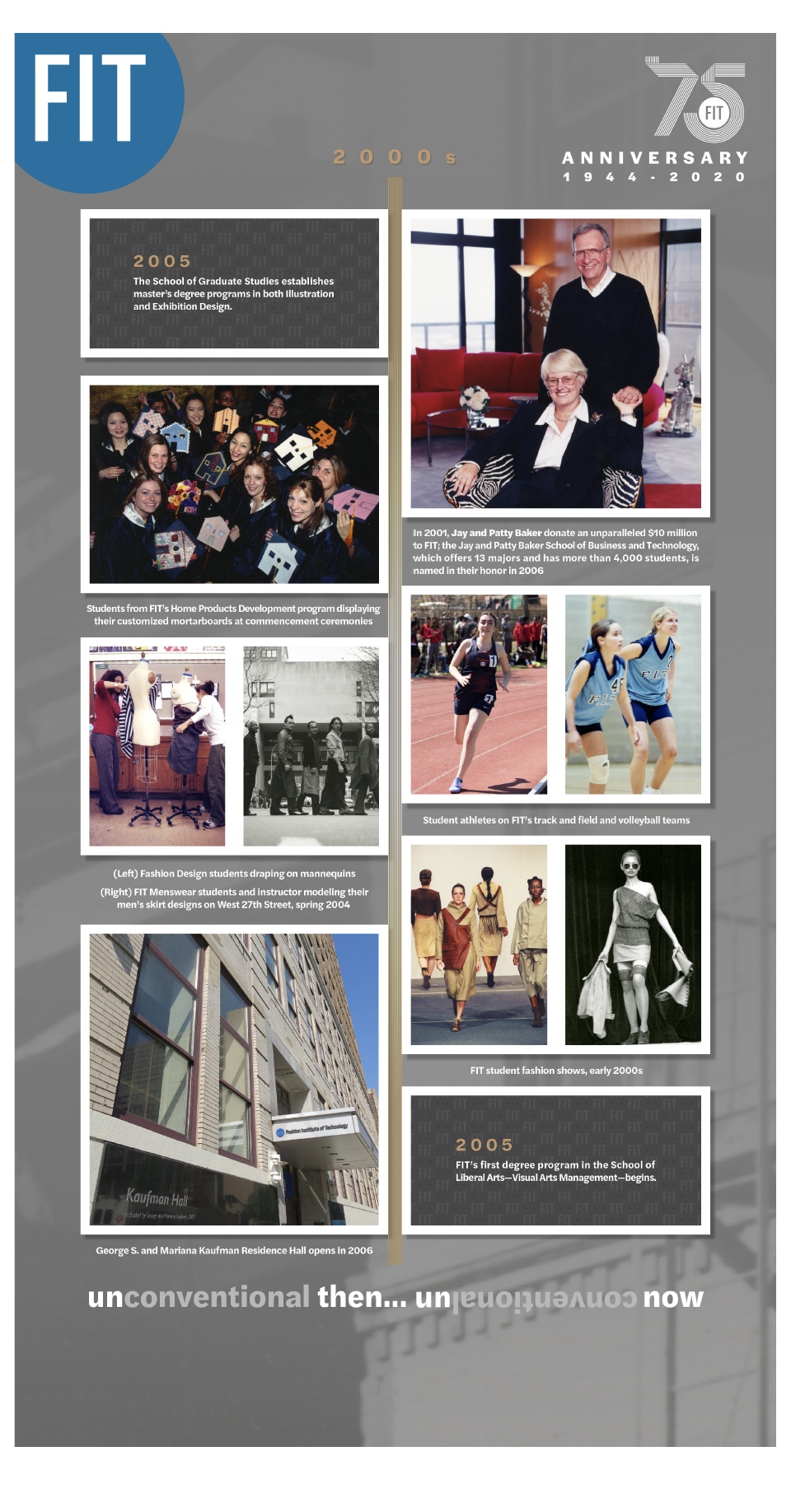 2000s 2000s |
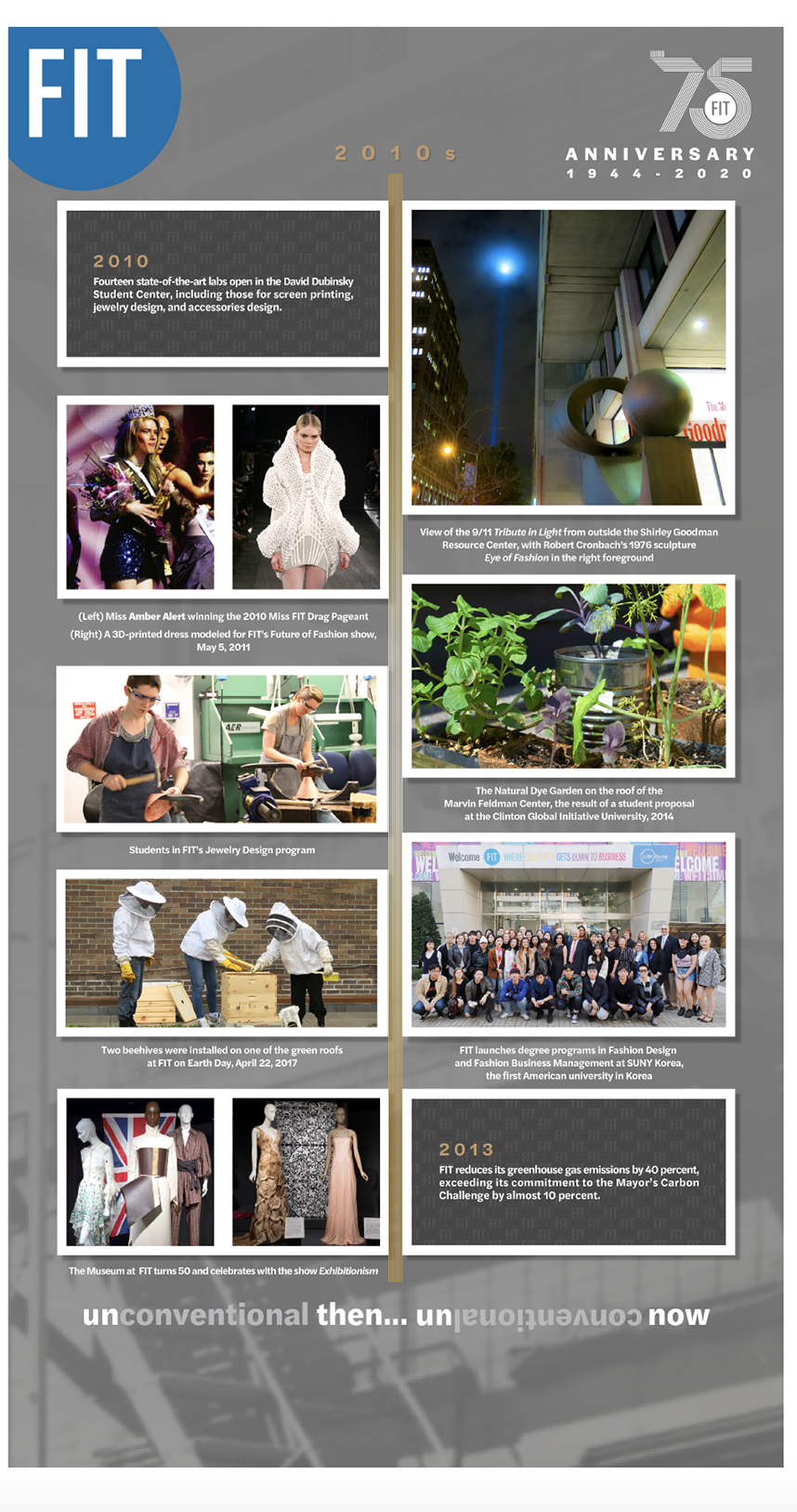 2010s 2010s |
How does the library determine historical value?
Are you or your unit making FIT history? Are your records “archival?” Some questions to consider include:
- Do or will the records have secondary value, that is, value beyond the original intent of their creation? Examples: FIT symposia and related events.
- Do or will the records address any significant policy or decision made on behalf of your unit, your department, and/or the College? Example: Board of Trustees meetings.
- Does the information contained within the records have potential relevance to future scholarship? Example: Capstone presentations.
- According to informed opinion, is a College event, and associated records, worth remembering and/or revisiting? Examples: Guest lectures and Awards ceremonies.
If you answered “yes” to one or more of these questions, then you very probably have archival or historical content to deposit in the FIT Library College Archives.
Other matters to consider include:
- When the records were created: records created during a time of momentous change, which are scarce or which cover a long period of time tend to be more significant.
- What kind of information the records contain: records that contain more in-depth information are more likely to have enduring value.
- Who created the records: records that reflect an employee's perspective or individual point of view may be more significant.
- What other records exist: if the information in the records exists in other records within the College, then the records are less likely to be significant.
- The unique history of FIT or its broader community: records created during important time periods or events can provide clues to how the events affected the development of the College and the community it serves.
OneSearch, the Gladys Marcus Library's online catalog, provides access to all available materials in the College Archives. Archives Finding Aids offer organizational histories and comprehensive inventories.
Online Finding Aids are available for the following College Archive collections:
- Historical Photographs collection, 1940-1990 (US.NNFIT.SC.FITA.0.2)
- Museum at FIT records, 1948-2015 (US.NNFIT.SC.FITA.10)
- School of Graduate Studies Fashion and Textile Studies Symposia records, 2005-2015 (US.NNFIT.SC.FITA.3.10.1.2)
Click here to view some of our archival media on the FIT Timeline, a visual history of FIT.